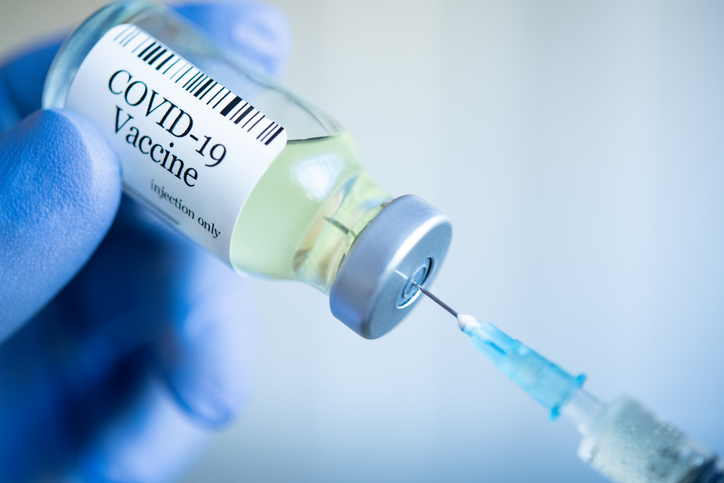With the aim to provide more accurate and timely data, the Truth for Health Foundation launched the Citizens Vaccine Injury Reporting System (CVIRS) in April, an alternative vaccine injury reporting system to the much-criticized one managed by federal health agencies.
The Vaccine Adverse Events Reporting System (VAERS), jointly run by the Centers for Disease Control and Prevention (CDC) and the U.S. Food and Drug Administration (FDA) has been challenged as an “outdated and unreliable” database for vaccine injuries, especially since the emergency use authorization of COVID-19 vaccines, said Lee Vliet, M.D., the president, and CEO of the Truth for Health Foundation
“The VAERS system is seriously flawed, difficult to use, and intimidating with threats of fines and prosecution for a false statement on every screen,” said Vliet. “VAERS has been known, since the Harvard study in 2010, to seriously under-report adverse events because of the difficulty in using it. Laypeople cannot easily self-report, and there is a disincentive for health professionals to report adverse events due to the system being so time-consuming for each report.”
Launched in English, Spanish, and Chinese, CVIRS promises to be user-friendly, with reporting taking less than 20 minutes via cell phone.
VAERS Too Slow
VAERS has a current backlog of over 22,000 cases, with an unknown number of those filed and not yet assigned a case ID and the site, itself is unwieldy and fails to provide an accurate picture of COVID-19 vaccine reactions, says Vliet.
“The CDC has not been posting adverse events in a timely manner. Expert analysts confirm that adverse event reports have been deleted after filing, over 6,300 in the last four weeks alone, including 80 deaths, and there has been no effort to inform the public of the adverse events,” said Vliet.
Thousands of reports of heart attacks, myocarditis, and other heart-related reactions should have resulted in an investigation by U.S. Food and Drug Administration, says David Gortler, a pharmacologist, policy fellow at the Ethics and Public Policy Center, a former senior advisor to the FDA commissioner for drug safety, and policy advisor to The Heartland Institute, which co-publishes Health Care News.
“The process is badly flawed, and what results that are found tend to be dismissed with the tired, worn-out expression of ‘correlation is not causation’ which even the FDA disagrees with,” said Gortler.
“Studies acknowledged by FDA officials show that the FDA’s various safety databases only collect an estimated one to 13 percent of all adverse events that occur,” said Gortler. “Multiple FDA drug safety epidemiologists have stated during official FDA presentation that it only takes a single well-documented adverse event to justify a safety signal investigation and in turn to warn the American public of the potential risk.”
Reporting Flaws
Gortler says data collection for VAERS is intrinsically flawed, with little incentive for health care workers to log reported injuries.
“Nurses, pharmacists, and physicians simply don’t take the time to report what patients tell them because they aren’t required to do so,” said Gortler. “Neither are the 80,000 plus employees that work for HHS (U.S. Health and Human Services), which includes the 20,000 employees at the FDA. Many clinicians ask themselves if the federal HHS employees aren’t mandated to take the time to report, why should we?”
Truth for Health maintains its independence from similar reporting flaws by retaining voluntary physicians, epidemiologists, and scientists who are motivated to collect accurate data for the good of public health, says Vliet.
“The software design ensures easy, rapid accessibility and reporting…unlike cumbersome hard-to-use VAERS,” said Vliet.
As part of its alternative vaccine injury reporting system, the organization also shares information on treatment plans for vaccine injuries.
Impact on Health Agencies
The federal health agencies will likely not make use of the accurate, up-to-date data the alternative vaccine injury reporting system, CVIRS provides, says Vliet.
“The government has been negligent in using the signals of risk in VAERS to guide official policy,” said Vliet. “We don’t expect CVIRS to overcome government failure to do its duty to protect the public. We are using CVIRS to put reliable information in the hands of the public to be able to make their own decisions, as medicine should be doing.”
“Historically, the FDA has sought safety warnings on labels, up to and including…a prescribing restriction known as a Risk Evaluation and Mitigation Strategy (REMS) for much less,” said Gortler.
“Thousands of serious, debilitating, and deadly safety VAERS reports following COVID vaccines and boosters are not being held to the same regulatory standards,” said Gortler. “If approximately one to 13 percent of adverse events is reported, extrapolating those numbers means the actual number of adverse health events could easily be in the hundreds of thousands in the United States and many millions worldwide.”
“Much like the White House under Biden, it seems that the FDA is unequally applying its own logic,” said Gortler.
Ashley Bateman (bateman.ae@googlemail.com) writes from Virginia.
For more great content from Health Care News.
